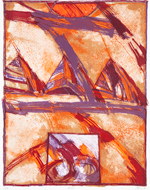
John Franklin Koenig: Works on Paper
January 9, 2009 – March 7, 2010
Study Gallery
John Franklin Koenig (American, 1924-2008) was an American painter and printmaker who lived and worked in Paris during most of his career. Born and raised in Seattle, he served in the Army in Europe during WWII and moved to Paris in 1948 where he established an outstanding career as a painter, gallery owner, printmaker, and co-founder of the art journal Ciamise. Organized by Director John Olbrantz, the exhibition features a range of prints from the past four decades that were given to the Hallie Ford Museum of Art in 2009.
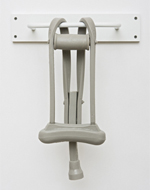
Heidi Schwegler: Slipping Underwater
May 23 – July 19, 2009
Heidi Schwegler is a Portland mixed media artist and associate professor at the Oregon College of Art and Craft in Portland. Her new mixed media installation, created specifically for the Hallie Ford Museum of Art, focuses on “a moment of anguish” and includes sculptural objects, film, and text.
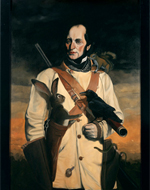
Robert McCauley: Rapids and Pools
June 6 – August 2, 2009
Study Gallery
Robert McCauley is a Mt. Vernon, Washington artist who explores the 19th century notion of “Manifest Destiny” and its impact on the indigenous cultures and environment of the western United States through paintings, drawings, installations, and mixed media works. Organized by Director John Olbrantz, the exhibition features 24 works from public and private collections in Washington, California, Idaho, and Illinois.
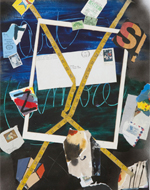
Eunice Parsons: Collages
July 25 – September 20, 2009
Study Gallery
The Portland artist Eunice Parsons has been called an American master of the art of collage. Parsons’ interest in the interplay of words and phrases and her travels to Europe and the Far East are reflected in her collage work. Organized by Professor Roger Hull, the exhibition features a range of collages created over the past few decades and includes work from public and private collections throughout the region.
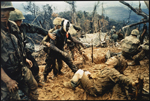
Requiem: By the Photographers Who Died in Vietnam and Indochina
August 15 – November 8, 2009
Melvin Henderson-Rubio Gallery
Organized by photojournalists Horst Faas and Tim Page to honor and remember the 135 photographers who died while working in Vietnam between 1945 and 1975, the exhibition includes work by such notable photojournalists as Robert Capa, Larry Burrows, and a host of other international photographers who contributed significant pictures before they lost their lives. The collection, which consists of 292 photographs that span three decades, has been given as a gift to the George Eastman House/International Museum of Photography and Film in Rochester, New York.
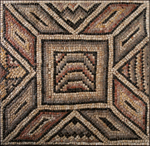
Ancient Mosaics: Selections from the Richard Brockway Collection
September 26 – December 23, 2009
Study Gallery
Ancient Mosaics: Selections from the Richard Brockway Collection, which features a range of mosaic fragments from Roman Syria, is on display Sept. 26 through Dec. 23 in the Study Gallery at the Hallie Ford Museum of Art at Willamette University. Organized by museum Director John Olbrantz, the exhibition includes pieces drawn from the Richard Brockway collection of Vero Beach, Fla. The show features five mosaic fragments that date from the 3rd to 6th centuries CE: two geometric mosaics that might have once graced a house, bath, mausoleum or church; two figurative mosaics of an unidentified standing male figure and a nature spirit that may have been part of a town or country house; and an animal mosaic depicting two deer that might have come from a domestic or church context.
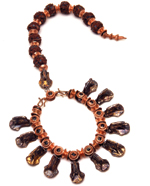
Loud Bones: The Jewelry of Nancy Worden
November 21, 2009 – January 17, 2010
Melvin Henderson-Rubio Gallery
Nancy Worden is a Seattle artist who creates intensely personal narrative jewelry that explores universal themes and various rites of passage from a woman's perspective. Organized by the Tacoma Art Museum, the exhibition presents a wide range of work created over the past 35 years drawn from public and private collections throughout the United States and Europe.
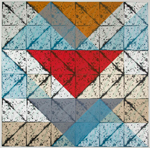
Joe Feddersen: Vital Signs
January 30 – March 28, 2010
Melvin Henderson-Rubio Gallery
Joe Feddersen is a Native American (Colville) artist who explores the dynamic interrelationships between urban place markers and indigenous landscapes through prints, woven baskets, and blown glass vessels. Organized by Professor Rebecca Dobkins, the exhibition features 62 works drawn from public and private collections throughout the United States.

African Stone Sculpture: Selections from the Keith Achepohl Collection
March 13 – May 23, 2010
Study Gallery
Stone sculpture is among the oldest sculptural traditions in Africa, dating back thousands of years. At sites such as Bura in Niger, for example, archaeologists have unearthed an astonishing array of abstract, anthropomorphic heads in stone, while at other sites in West Africa, they have discovered figurative sculptures whose purpose and function remains a mystery. Organized by Director John Olbrantz, the exhibition features a selection of stone sculptures from Niger, Mali, Burkina Faso, and Nigeria from the Keith Achepohl collection of Eugene, Oregon.
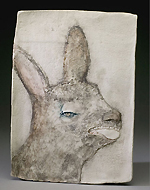
Heidi Preuss Grew: Römhild Übersetzung
April 10 – May 16, 2010
Melvin Henderson-Rubio Gallery
Heidi Preuss Grew is a Salem, Oregon artist and teacher whose ceramic sculptures combine animal and human imagery that reveal the multi-dimensional aspects of the human condition. The exhibition celebrates ten years of teaching at Willamette University and features a range of new work inspired by her research and participation in artist residencies in Germany during the past three years.
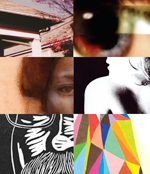
Senior Art Majors
April 10 – May 16, 2010
Melvin Henderson-Rubio Gallery
Each spring, the Hallie Ford Museum of Art features the work of senior art majors at Willamette University. The exhibition includes work in a variety of media, including painting, sculpture, printmaking, drawing, ceramics, photography, and mixed media. In addition, the exhibition features senior theses in art history.

